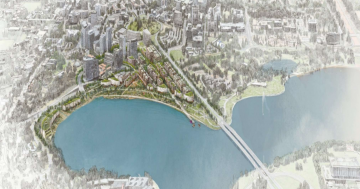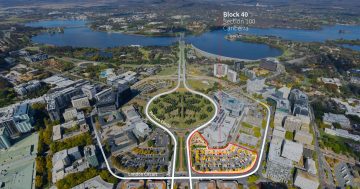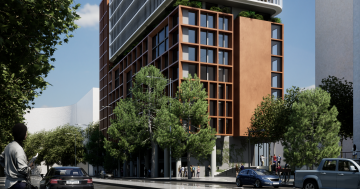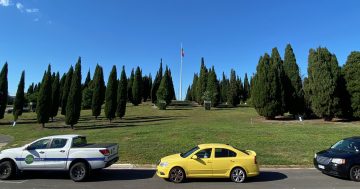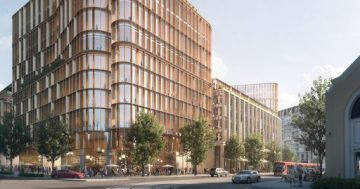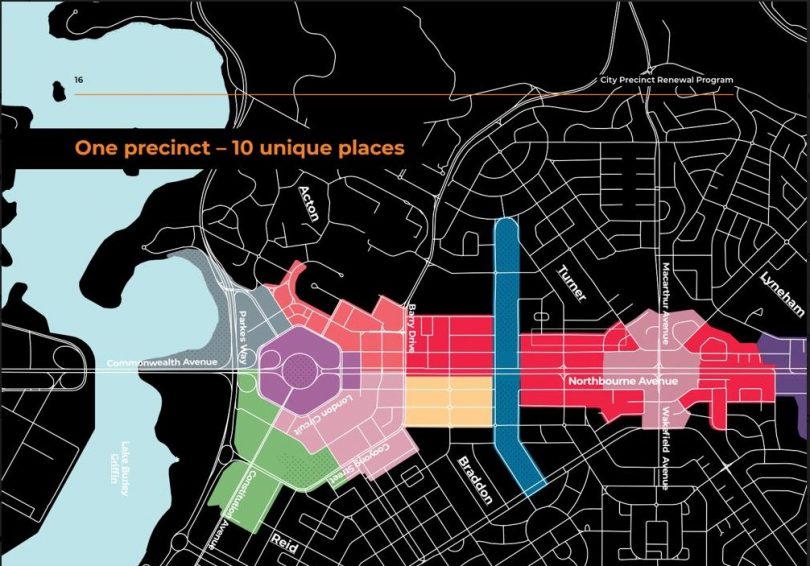
The City Precinct will see an influx of residents over the next 30 years. Image: Supplied.
The area from the Federal Highway in the north to West Basin in the south will be home to more than 50,000 people by 2046, according to the City Renewal Authority’s 30-year program launched on Friday.
The long-term blueprint for the City Precinct, which currently has a population of 15,000, says they will be housed in 26,000 dwellings, mostly apartments, 19,000 more than currently available, and require well-designed neighbourhoods with attractive public spaces, amenities and workplaces that support a modern urban lifestyle.
The Authority stresses good design, sustainability, amenity and diversity in its approach to guiding development in 10 defined places – the Northbourne Corridor gateway to the city, Dickson – ‘a thriving urban centre’, Macarthur Village – a ‘landmark mixed-use centre’, Braddon – ‘a vibrant and creative cluster’, City Hill, City West, Civic, City East and West Basin.
The program also sees the area as a major employment generator with almost 34,000 jobs added by 2046, bringing the number to more than 76,000.
The Authority says that by using baseline data from the 2016 Census, targets have been developed for the Precinct at 1.5 times the current population growth rate to 2031, increasing to twice the current growth rate to 2046.
This translates to 450 extra dwellings per year to 2031 before increasing to 600 dwellings per year through to 2046.
Growth will focus on areas adjacent to the Light Rail Stage 1 corridor in the next 15 years, with the city centre places, particularly currently undeveloped sites in these areas where no land release is currently scheduled, are expected to develop later, following planning for Light Rail Stage 2 and other work.
Current density across the precinct will increase from 18 dwellings per hectare to possibly 58 per hectare by 2046.
The program envisages almost half of the projected 2046 population, 25,000, living in the city places – City Hill (6160), where Section 63 is currently being designed ahead of a land release, City West (2614), Civic (5250), and the education precinct of City East (5707).
West Basin, which is the subject of debate about the impact development plans will have on the lake environment and public places, will have more than 5300 people and 2000 dwellings by 2046.
Chief Minister Andrew Barr said the program sets a clear direction for how government will go about overseeing development in the city centre.
“The City Precinct Renewal Program has been developed because cities don’t succeed by accident, or by leaving things to chance,” he said.
“The renewal actions described in the program will ensure our city continues to thrive socially, economically and sustainably as our population grows past 600,000.”
He said the program applies a best-practice placemaking approach that recognised the individual identities and much-loved characteristics of the different places within the City Renewal Precinct.
“It also strives for design excellence to enable our renewal efforts to create a beautiful, welcoming precinct that people will be proud of,” he said.
The program recognised that successful renewal required the combined effort of government, the private sector, and the community.
“It will require a collective effort to ensure our city centre realises its full potential, and the City Renewal Authority will continue to foster collaboration across all sectors,” he said.
Mr Barr said the program included a mix of long, medium and short-term renewal actions, which have been developed through consultation with the community and through detailed analysis and review of current ACT Government strategies and planning policies.
It included short-term infrastructure projects like streetscape upgrades in Dickson and Braddon, to development planning and initial works for significant transformational projects such as a new UNSW campus in City East, the creation of a new public space along the West Basin lakefront, and the transformation of key public spaces in the city centre.
“Importantly, the program is not fixed. It is a dynamic program that will be updated as priority projects evolve, or as the need arises to incorporate emerging trends and priorities,” he said.













